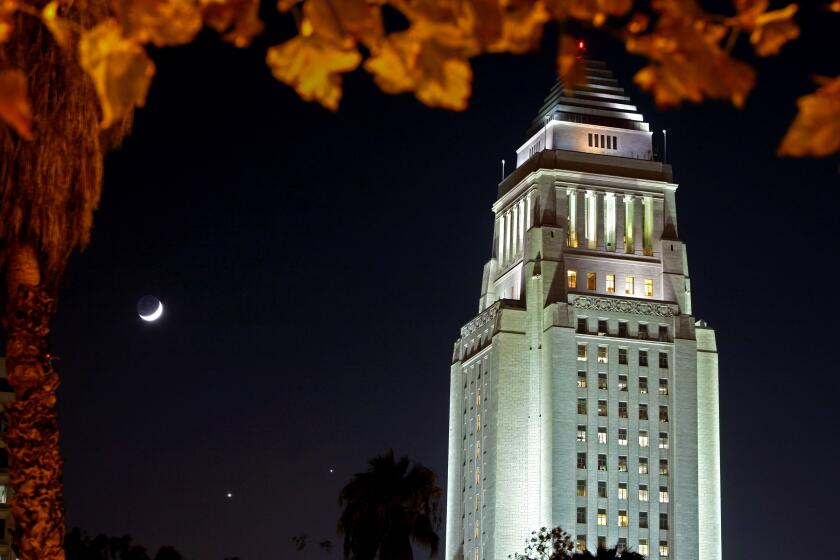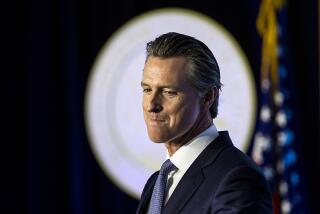Joe Biden wants 100% clean energy. Will California show that it’s possible?
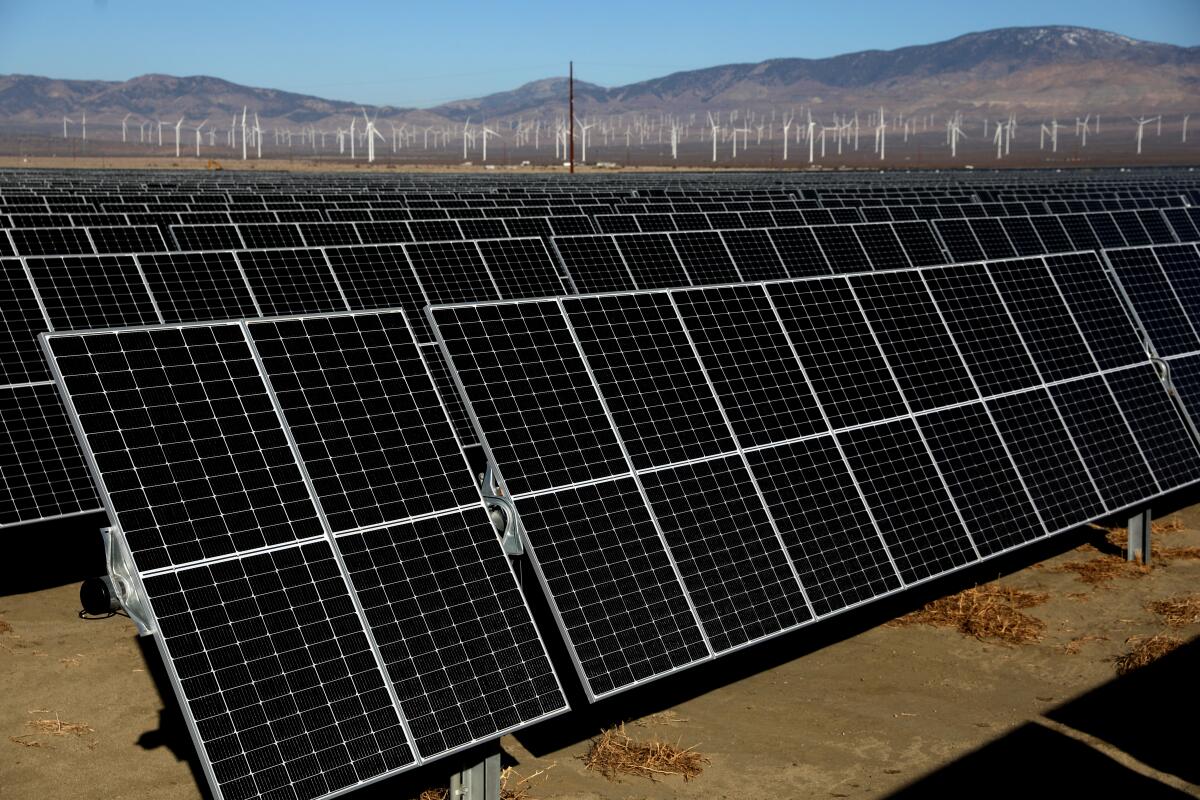
The undersea power line would run south from San Luis Obispo County, hugging the California coast for 200 miles before making landfall in or near Los Angeles. It would be able to carry electricity from a fleet of offshore wind turbines, providing Southern California with clean power after sundown and helping to replace fossil-fueled generators.
Fewer planet-warming emissions, less risk of blackouts, and no chance of igniting the wildfires sometimes sparked by traditional power lines: Those are the arguments for the $1.9-billion Pacific Transmission Expansion.
Yet state officials haven’t shown much interest.
To understand why, you need to look beyond the sheen of California’s impressive climate targets and navigate the labyrinth of cautious regulators and bureaucratic silos that critics say are stifling badly needed clean energy infrastructure — and will keep doing so unless Gov. Gavin Newsom demands greater urgency.
Policymakers across the country are looking to California to show that it’s possible to phase out fossil fuels. State law mandates 100% clean energy by 2045, and until recently, things seemed to be going well. Nearly two-thirds of California’s electricity came from climate-friendly sources in 2019, against the backdrop of a growing pre-pandemic economy.
Two evenings of rolling blackouts in August 2020 offered a warning of more challenging times ahead.
In a recent report examining what went wrong, state officials cast some of the blame on themselves. They said they had failed to require enough energy resources that could keep power flowing to air conditioners on hot summer evenings, after solar panels go dark.
Now they’re scrambling to avoid additional outages next summer, in part by extending the life of climate-polluting natural gas plants that otherwise would have shut down.
But even if California skates by without rolling blackouts in 2021, there’s a clear longer-term need for clean energy sources that can be relied on when electricity demand is high and there’s not enough sunlight to go around. That’s where climate activists and renewable-power companies worry that Newsom’s administration is setting up the Golden State for failure.
“The state is essentially sowing the seeds for the next crisis,” said Danielle Osborn Mills, California director for the American Clean Power Assn., an industry trade group.
Strong ocean breezes off the California coast blow more consistently than onshore winds and stay strong into the evening, making them a potentially valuable complement to solar farms. Other after-dark clean energy options include geothermal plants that tap into Earth’s subterranean heat and lithium-ion batteries that can store solar power for use in the evening.
The California Public Utilities Commission has begun pushing utility companies to invest in batteries but has largely ignored other technologies, even though there’s widespread agreement that batteries alone won’t be enough to phase out fossil fuels.
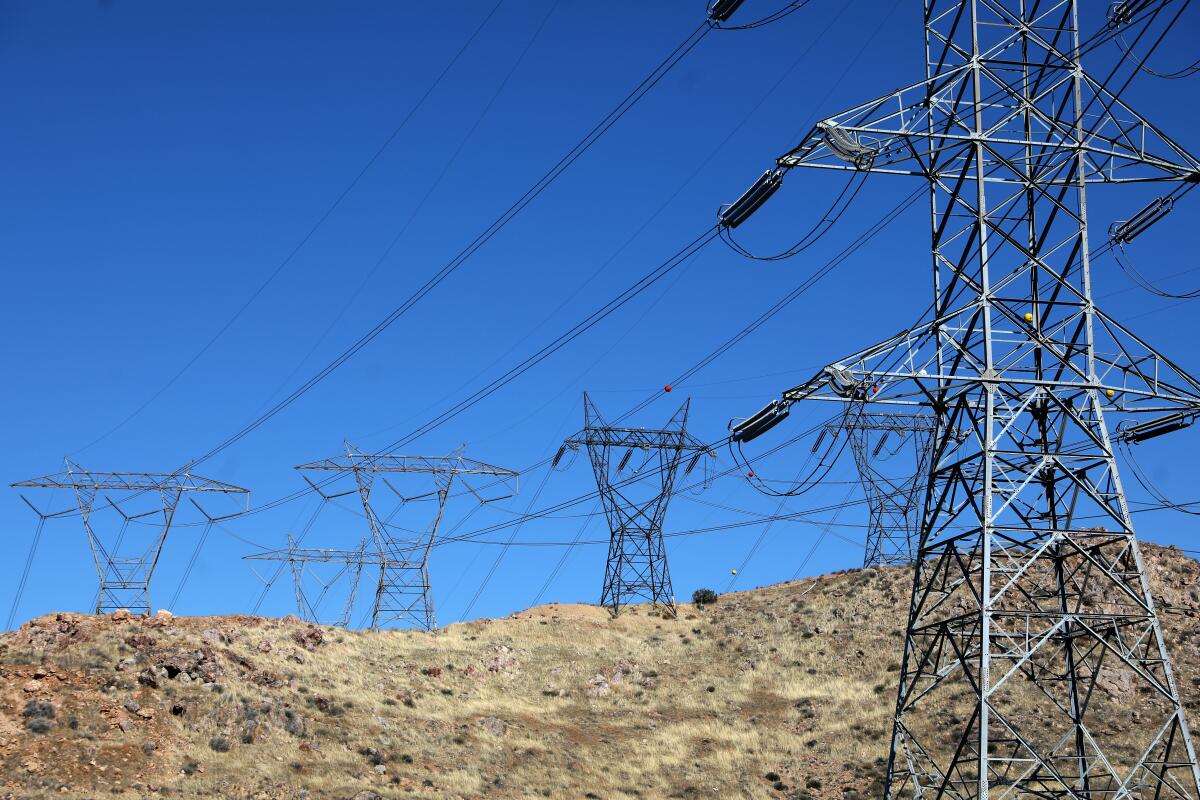
Power plants fueled by natural gas and coal are only one slice of California’s contribution to climate change, with cars and trucks making up the biggest share of emissions. But cleaning up transportation will depend on a power grid big enough to support millions of electric vehicles, with enough transmission lines and renewable-energy generators to meet the influx of demand.
So climate advocates were frustrated when the Public Utilities Commission set a target last year of reducing emissions from power plants by just 25% by 2030 — a slower pace than emissions fell during the previous decade. The California Independent System Operator, which oversees the power grid, described the 2030 target as inadequate for meeting the state’s climate goals.
Despite that criticism, the utilities commission unanimously approved a proposal Thursday that made its 2030 target the basis for approving or rejecting new transmission lines, such as the undersea cable. That’s a big deal because transmission is crucial for connecting renewable-energy facilities such as solar and wind farms with cities that consume large amounts of electricity — and permitting and building new power lines is an arduous process that can take as long as a decade.
Your guide to our clean energy future
Get our Boiling Point newsletter for the latest on the power sector, water wars and more — and what they mean for California.
You may occasionally receive promotional content from the Los Angeles Times.
If the commission doesn’t plan for enough new transmission today, climate advocates say, Californians in 2030 could find themselves still hooked on natural gas — or, if more gas plants shut down, facing heightened risk of blackouts.
“The accountability is lacking at this agency, and yet they are the linchpin of California meeting its climate goals,” said V. John White, executive director of the Center for Energy Efficiency and Renewable Technologies.
Commission staff say they must tread carefully before compelling utilities to build new infrastructure because projects such as the $1.9-billion undersea cable are paid for by utility customers through their electric bills.
Ed Randolph, who leads the commission’s energy division, said transmission costs accounted for one-fifth of ratepayer bills. Those costs have risen sharply over the last decade — 17% at Southern California Edison, 14% at San Diego Gas & Electric and 10% at Pacific Gas & Electric, according to an April 2020 report. And they’re likely to keep going up, with the three companies planning to spend $15 billion over the next two years to reduce the risk of wildfire ignitions from their infrastructure.
In an interview last summer — shortly after the state barely avoided a second round of rolling blackouts amid an intense heat wave — Randolph said his agency was forecasting electric rate increases of 20% to 40% over the next three years.
If energy bills rise too quickly, he predicted, there could be a “ratepayer revolt” that derails California’s climate goals.
“You’ll get to a point where people won’t want to buy an electric vehicle because it will be cheaper to power a car with gasoline,” he said. “People won’t want to buy electric hot water heaters for their homes because boiling natural gas is clearly cheaper.”
We asked L.A. City Council members where they stand on requiring all-electric heating and cooking in new housing.
Yet the Independent System Operator — the agency responsible for initiating rolling blackouts when the need arises, as it did in August — has continued to criticize the utilities commission’s clean energy infrastructure planning as so insufficient that it may undermine California’s ability to avoid blackouts and achieve its ambitious climate goals.
Part of the grid operator’s concern is the looming retirement of the Diablo Canyon nuclear plant, the state’s largest electricity generator. It’s scheduled to start shutting down in 2024, and huge amounts of new resources will be needed to replace it.
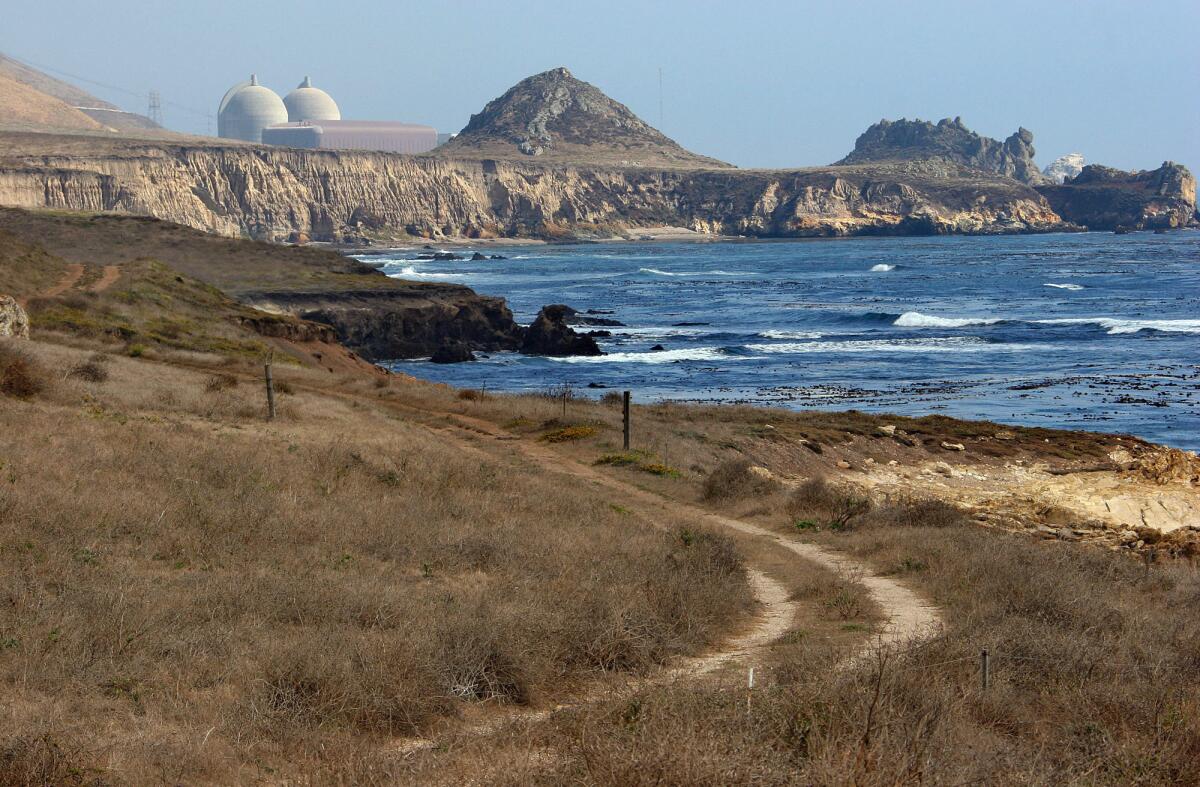
The undersea cable to Los Angeles isn’t designed as a replacement for Diablo Canyon. But it would plug into the electric grid at the site of the nuclear plant. It would most likely carry power generated by offshore wind turbines or by solar farms paired with batteries in the San Joaquin Valley, where some farmers are turning to solar development as water supplies dwindle.
Either option could help the Los Angeles Basin phase out gas plants that spew not only carbon dioxide but also toxic pollutants, contributing to unhealthy air quality in low-income neighborhoods with many Latino and Black residents.
“We don’t have to close gas plants tomorrow. But we have to plan,” said Robert Mitchell, co-founder of Three Rivers Energy Development, the company behind the Pacific Transmission Expansion.
“You could have all the renewable energy in the world. But if you don’t have the transmission lines, you have nothing,” then-Gov. Arnold Schwarzenegger said in 2010.
An advantage of undersea transmission is that Mitchell’s company wouldn’t have to negotiate agreements with hundreds of landowners along the project route, one of the main reasons land-based power lines can take so long to complete.
But there would still be hurdles.
California zealously guards its coastline as a treasured public space and a safe harbor for marine life.
Mitchell’s power line would be buried via an installation process that he says would have little impact on ocean life, and there are already fiber optic cables across the seafloor. But the Coastal Commission would no doubt have questions, as would fishermen and environmental activists.
“There is so much unknown in terms of impacts on habitat, the environment, fishing grounds and marine wildlife in general,” Mike Conroy, executive director of the Pacific Coast Federation of Fishermen’s Assns., said in an email.
Some environmental activists have also raised concerns about offshore wind turbines — as has the military, which says the towering structures could interfere with training exercises. There are currently no wind farms off the U.S. West Coast, despite enormous energy potential. The East Coast already has two wind farms, with more planned.
“We’re very frustrated with the lack of serious planning for offshore wind in California,” said Nancy Rader, executive director of the California Wind Energy Assn., an industry trade group. “We’re just banging our head against the wall.”
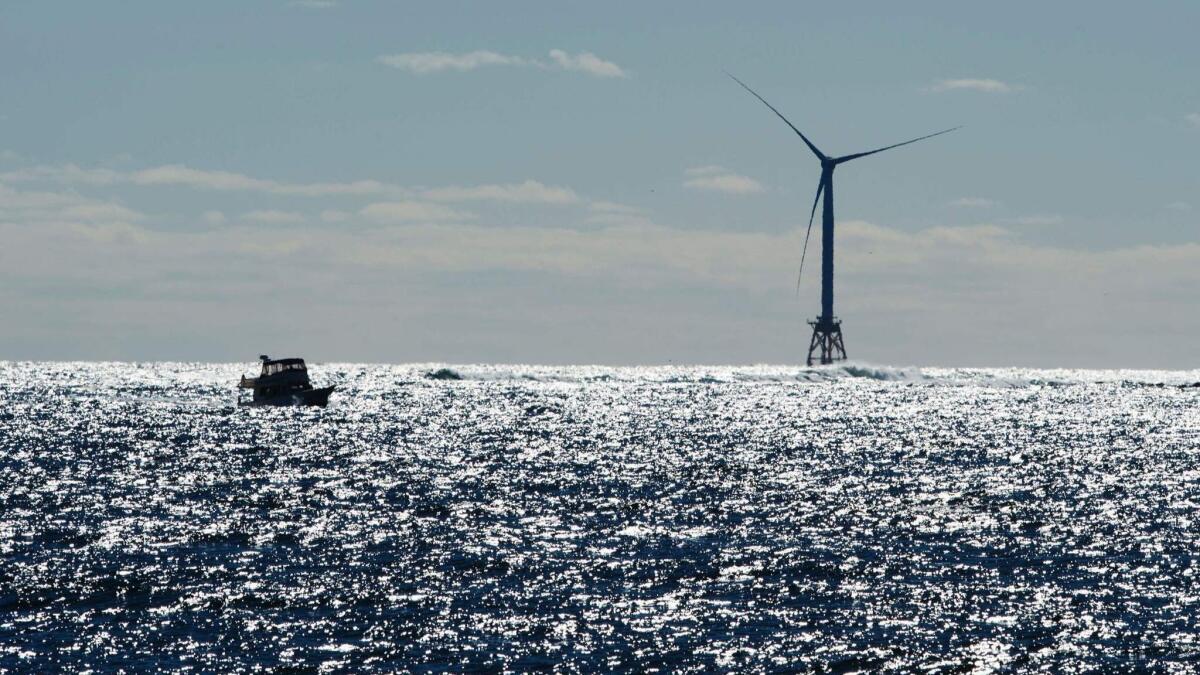
There’s little question offshore wind will eventually be needed — it’s just a matter of how much, and how soon.
A draft report released by the California Energy Commission, the Public Utilities Commission and the Air Resources Board in December concluded that the cheapest path to 100% clean energy involved building 10 gigawatts of offshore wind — more than four times as much power as the Diablo Canyon nuclear plant generates. And that may be a lowball figure, considering the agencies capped offshore wind at just 10 gigawatts in their models despite a technical potential more than 10 times that amount.
Support our journalism
Your support helps us deliver the news that matters most. Subscribe to the Los Angeles Times.
Wind energy developers say there are advantages to moving quickly.
They note that the government spending bill passed by Congress in December allows offshore-wind projects to qualify for a 30% federal investment tax credit — but only if they begin construction by 2025. Utility ratepayers could lose out on energy bill savings if developers can’t get started by then, although it’s possible falling technology costs would make up some of the difference.
The Biden administration’s climate plans are another consideration. President Biden campaigned on a goal of 100% clean power by 2035, a decade earlier than California’s current mandate. Analysts at the energy research firm Wood Mackenzie say meeting the new president’s lofty ambition would require “hockey-stick growth in offshore wind.”
Biden also promised to create millions of clean energy jobs — and organized labor sees offshore wind as a good fit.
In an October letter to Newsom, John O’Rourke, a vice president at the International Brotherhood of Electrical Workers, wrote that offshore-wind development would create thousands of high-skilled jobs. Undersea cables, he said, could help deliver that power to Los Angeles and other cities.
He asked Newsom to “compel the California Public Utilities Commission to move forward now with direction on transmission planning, so the process for approval can begin in early 2021.”
In another letter last week, a coalition of environmentalists and renewable-energy trade groups — including the Natural Resources Defense Council, the Union of Concerned Scientists and the Large-Scale Solar Assn. — urged Newsom to “appoint thoughtful and committed leaders” to the Public Utilities Commission and other agencies, with a goal of speeding up climate action. They said the state is not on track to reach 100% clean energy by 2045, and that won’t change without new direction.
“Unfortunately, years of bureaucratic delay have caught up to us,” they wrote.
Asked about those letters, Newsom spokeswoman Erin Mellon said in an email that the governor had “emphasized the need to meet the state’s clean energy goals.” She also noted California’s role in launching a task force “to bring together state, local, federal agencies and tribal governments to advance offshore wind including to open up offshore lease areas.”
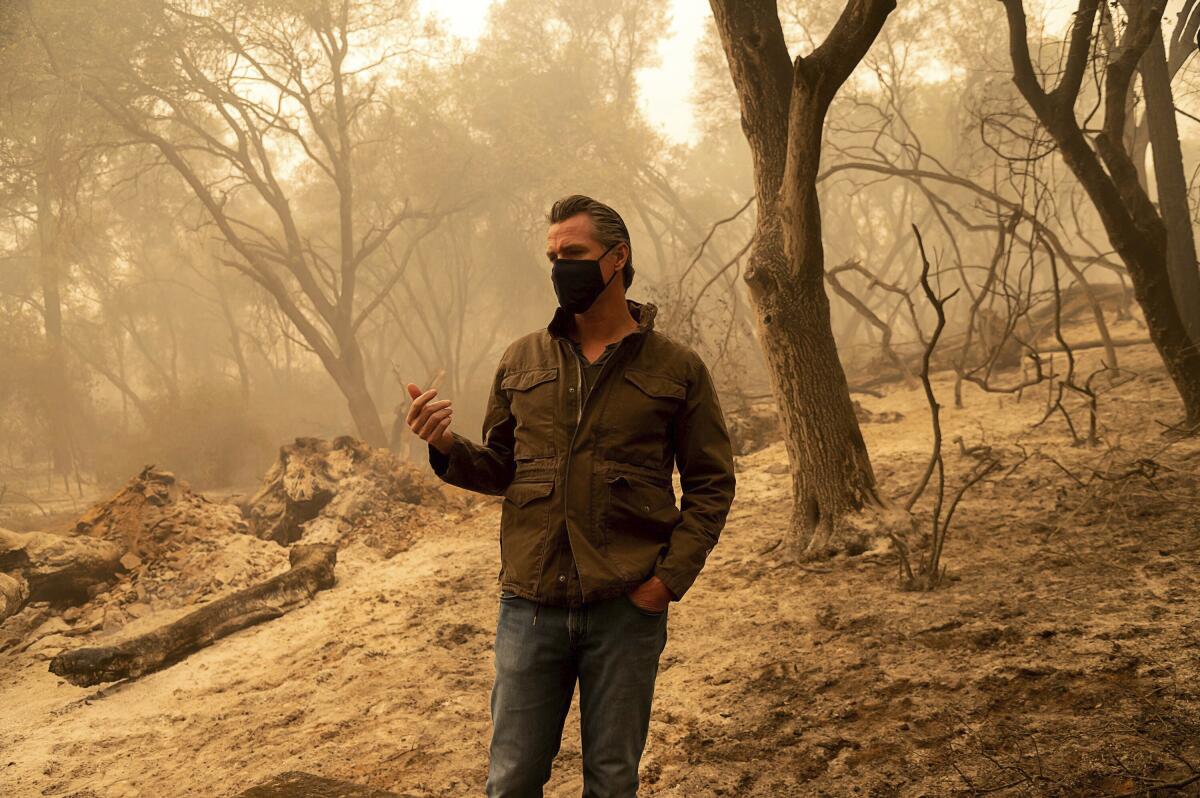
Newsom moved aggressively in another climate arena in September, ordering regulators to ban the sale of oil-powered cars by 2035. That followed his pledge to “fast-track” the state’s climate efforts after a summer of recording-breaking fires.
But climate advocates say the governor must play a more active role in infrastructure decisions being made a lot sooner than 2035 — in part because of the fragmented nature of the bureaucracy responsible for those decisions.
For an example of what that fragmentation looks like, take the transmission corridor known as Path 26.
It’s a key electrical highway connecting Southern California Edison and Pacific Gas & Electric, with wires that run from an Edison substation north of Los Angeles to a PG&E facility west of Bakersfield. The wires are increasingly “congested,” meaning there’s often more demand to send electricity through them than Path 26 can handle.
The result is that it’s costlier and more difficult for renewable-energy companies to send power south to the Los Angeles Basin, potentially limiting development of offshore-wind farms and solar-plus-battery projects in the San Joaquin Valley.
Upgrading Path 26 would help relieve the congestion. Building an undersea cable is another option.
But officials at the Independent System Operator “haven’t seen a credible business case to justify spending any material amount of money” on either of those options, said Neil Millar, the agency’s vice president of infrastructure development. And why is that? Because the grid operator can only approve transmission projects that meet an energy need identified by the Public Utilities Commission — and the commission has thus far assumed that L.A. Basin gas plants will continue to operate.
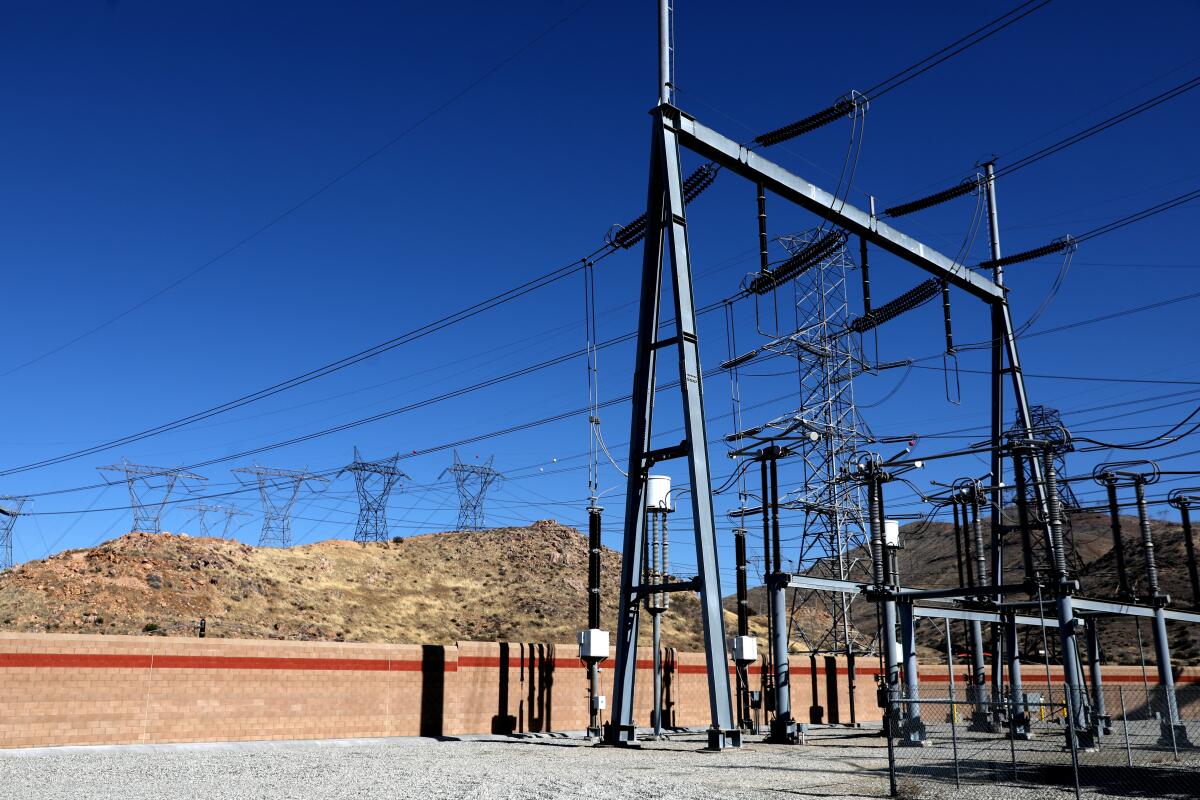
Public Utilities Commission staff say there’s still room to ship additional clean energy around the state via existing wires, at least for now. They’re working on plans to replace Diablo Canyon, and they disagree with the grid operator’s gloomy predictions about what might happen if they don’t push for a faster infrastructure build-out.
As for new types of clean energy that can fill the gap when the sun isn’t shining — such as offshore wind or geothermal — commission staff don’t foresee much need for them until after 2030, meaning there’s still time to get started on new transmission.
“Even in the most conservative timeline that we need to build transmission, it’s further out than where we are right now,” said Randolph, the agency’s energy division chief.
Commission staff made some last-minute changes to their contested transmission-planning proposal before Thursday’s vote, acknowledging that some geothermal will be needed and that emissions probably will have to come down faster than they’ve previously assumed. They say they’ll have an opportunity to adopt a more ambitious plan as soon as next year.
Randolph said there was “both an art and a science” to piecing together the puzzle of 100% clean energy. If elected officials have different ideas about how fast the state needs to move, he suggested, they should tell regulators what they want done.
The planet is warming, and the clock is ticking. Although 2045 may seem like a long way off, 24 years isn’t much time in the life of the power grid. For better or worse, the decisions California makes today could reverberate for decades.
More to Read
Updates
2:30 p.m. Feb. 11, 2021: This story was updated to reflect a vote Thursday by the California Public Utilities Commission.
Toward a more sustainable California
Get Boiling Point, our newsletter exploring climate change, energy and the environment, and become part of the conversation — and the solution.
You may occasionally receive promotional content from the Los Angeles Times.
